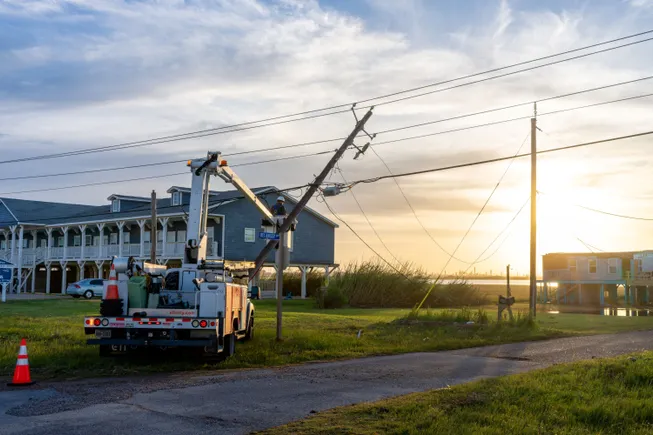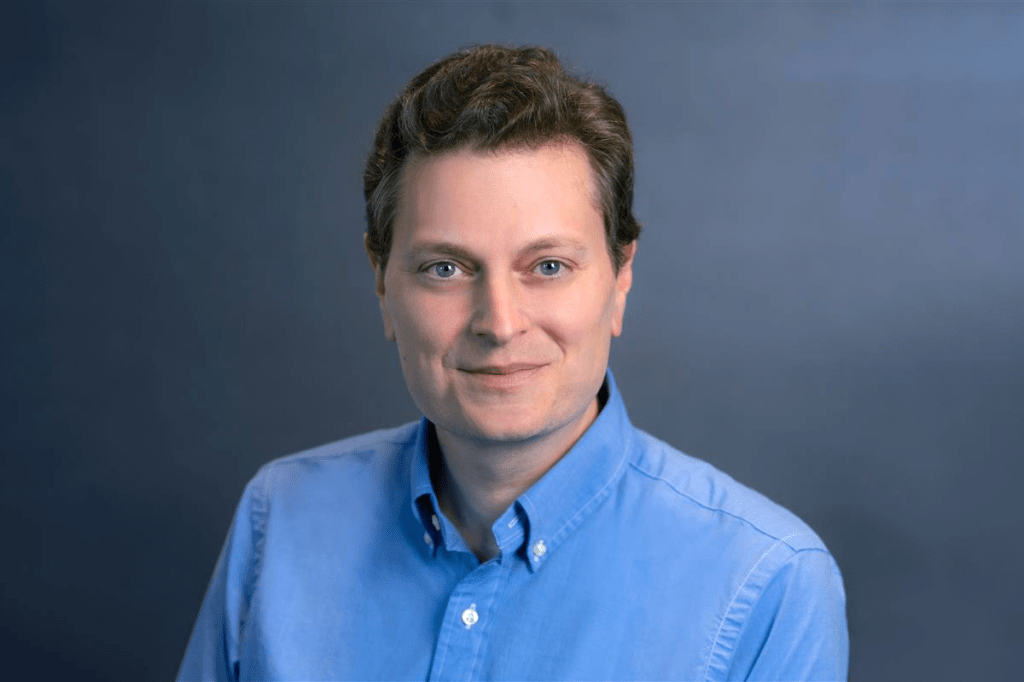
When Jim O’Neill was nominated to be the second in command at the US Department of Health and Human Services, Dylan Livingston was excited. As founder and CEO of the lobbying group Alliance for Longevity Initiatives (A4LI), Livingston is a member of a community that seeks to extend human lifespan. O’Neill is “kind of one of us,” he told me shortly before O’Neill was sworn in as deputy secretary on June 9. “And now [he’s] in a position of great influence.”
As Robert F. Kennedy Jr.’s new right-hand man, O’Neill is expected to wield authority at health agencies that fund biomedical research and oversee the regulation of new drugs. And while O’Neill doesn’t subscribe to Kennedy’s most contentious beliefs—and supports existing vaccine schedules—he may still steer the agencies in controversial new directions.
Although much less of a public figure than his new boss, O’Neill is quite well-known in the increasingly well-funded and tight-knit longevity community. His acquaintances include the prominent longevity influencer Bryan Johnson, who describes him as “a soft-spoken, thoughtful, methodical guy,” and the billionaire tech entrepreneur Peter Thiel.
In speaking with more than 20 people who work in the longevity field and are familiar with O’Neill, it’s clear that they share a genuine optimism about his leadership. And while no one can predict exactly what O’Neill will do, many in the community believe that he could help bring attention and resources to their cause and make it easier for them to experiment with potential anti-aging drugs.
This idea is bolstered not just by his personal and professional relationships but also by his past statements and history working at aging-focused organizations—all of which suggest he indeed believes scientists should be working on ways to extend human lifespan beyond its current limits and thinks unproven therapies should be easier to access. He has also supported the libertarian idea of creating new geographic zones, possibly at sea, in which residents can live by their own rules (including, notably, permissive regulatory regimes for new drugs and therapies).
“In [the last three administrations] there weren’t really people like that from our field taking these positions of power,” says Livingston, adding that O’Neill’s elevation is “definitely something to be excited about.”
Not everyone working in health is as enthusiastic. If O’Neill still holds the views he has espoused over the years, that’s “worrisome,” says Diana Zuckerman, a health policy analyst and president of the National Center for Health Research, a nonprofit think tank in Washington, DC.
“There’s nothing worse than getting a bunch of [early-stage unproven therapies] on the market,” she says. Those products might be dangerous and could make people sick while enriching those who develop or sell them.
“Getting things on the market quickly means that everybody becomes a guinea pig,” Zuckerman says. “That’s not the way those of us who care about health care think.”
The consumer advocacy group Public Citizen puts it far more bluntly, describing O’Neill as “one of Trump’s worst picks” and saying that he is “unfit to be the #2 US health-care leader.” His libertarian views are “antithetical to basic public health,” the organization’s co-president said in a statement. Neither O’Neill nor HHS responded to requests for comment.
“One of us”
As deputy secretary of HHS, O’Neill will oversee a number of agencies, including the National Institutes of Health, the world’s biggest funder of biomedical research; the Centers for Disease Control and Prevention, the country’s public health agency; and the Food and Drug Administration, which was created to ensure that drugs and medical devices are safe and effective.
“It can be a quite powerful position,” says Patricia Zettler, a legal scholar at Ohio State University who specializes in drug regulation and the FDA.
It is the most senior role O’Neill has held at HHS, though it’s not the first. He occupied various positions in the department over five years during the early 2000s, according to his LinkedIn profile. But it is what he did after that has helped him cultivate a reputation as an ally for longevity enthusiasts.
O’Neill appears to have had a close relationship with Thiel since at least the late 2000s. Thiel has heavily invested in longevity research and has said he does not believe that death is inevitable. In 2011 O’Neill referred to Thiel as his “friend and patron.” (A representative for Thiel did not respond to a request for comment.)
O’Neill also served as CEO of the Thiel Foundation between 2009 and 2012 and cofounded the Thiel Fellowship, which offers $200,000 to promising young people if they drop out of college and do other work. And he spent seven years as managing director of Mithril Capital Management, a “family of long-term venture capital funds” founded by Thiel, according to O’Neill’s LinkedIn profile.
O’Neill got further stitched into the longevity field when he spent more than a decade representing Thiel’s interests as a board member of the SENS Research Foundation (SRF), an organization dedicated to finding treatments for aging, to which Thiel was a significant donor.
O’Neill even spent a couple of years as CEO of SRF, from 2019 to 2021, when its founder Aubrey de Grey, a prominent figure in the longevity field, was removed following accusations of sexual harassment. As CEO, O’Neill oversaw a student education program and multiple scientific research projects that focused on various aspects of aging, according to the organization’s annual reports. And in a 2020 SRF annual report, O’Neill wrote that Eric Hargan, then the deputy secretary of HHS, had attended an SRF conference to discuss “regulatory reform.”
“More and more influential people consider aging an absurdity,” he wrote in the report. “Now we need to make it one.”
While de Grey calls him “the devil incarnate”—probably because he believes O’Neill “incited” two women to make sexual harassment allegations against him—the many other scientists, biotech CEOs, and other figures in the longevity field contacted by MIT Technology Review had more positive opinions of O’Neill, with many claiming they were longtime friends or acquaintances of the new deputy secretary (though, at the same time, many were reluctant to share specific views about his past work).
Longevity science is a field that’s long courted controversy, owing largely to far-fetched promises of immortality and the ongoing marketing of creams, pills, intravenous infusions, and other so-called anti-aging treatments that are not supported by evidence. But the community includes people along a spectrum of beliefs (with the goals of adding a few years of healthy lifespan to the population at one end and immortality at the other), and serious doctors and scientists are working to bring legitimacy to the field.
Pretty much everyone in the field that I spoke with appears to be hopeful about what O’Neill will do now that he’s been confirmed. Namely, they hope he will use his new position to direct attention and funds to legitimate longevity research and the development of new drugs that might slow or reverse human aging.
Johnson, whose extreme and expensive approaches to extending his own lifespan have made him something of a celebrity, calls O’Neill a friend and says they’ve “known each other for a little over 15 years.” He says he can imagine O’Neill setting a goal to extend the lifespans of Americans.
Eric Verdin, president of the Buck Institute for Research on Aging in Novato, California, says O’Neill has “been at the Buck several times” and calls him “a good guy”—someone who is “serious” and who understands the science of aging. He says, “He’s certainly someone who is going to help us to really bring the longevity field to the front of the priorities of this administration.”
Celine Halioua, CEO of the biotech company Loyal, which is developing drugs to extend the lifespan of dogs, echoes these sentiments, saying she has “always liked and respected” O’Neill. “It’ll definitely be nice to have somebody who’s bought into the thesis [of longevity science] at the FDA,” she says.
And Joe Betts-LaCroix, CEO of the longevity biotech company Retro Biosciences, says he’s known O’Neill for something like 10 years and describes him as “smart and clear thinking.” “We’ve mutually been part of poetry readings,” he says. “He’s been definitely interested in wanting us as a society to make progress on age-related disease.”
After his confirmation, the A4LI LinkedIn account posted a photo of Livingston, its CEO, with O’Neill, writing that “we look forward to working with him to elevate aging research as a national priority and to modernize regulatory pathways that support the development of longevity medicines.”
“His work at SENS Research Foundation [suggests] to me and to others that [longevity] is going to be something that he prioritizes,” Livingston says. “I think he’s a supporter of this field, and that’s really all that matters right now to us.”
Changing the rules
While plenty of treatments have been shown to slow aging in lab animals, none of them have been found to successfully slow or reverse human aging. And many longevity enthusiasts believe drug regulations are to blame.
O’Neill is one of them. He has long supported deregulation of new drugs and medical devices. During his first tour at HHS, for instance, he pushed back against regulations on the use of algorithms in medical devices. “FDA had to argue that an algorithm … is a medical device,” he said in a 2014 presentation at a meeting on “rejuvenation biotechnology.” “I managed to put a stop to that, at least while I was there.”
During the same presentation, O’Neill advocated lowering the bar for drug approvals in the US. “We should reform [the] FDA so that it is approving drugs after their sponsors have demonstrated safety and let people start using them at their own risk,” he said. “Let’s prove efficacy after they’ve been legalized.”
This sentiment appears to be shared by Robert F. Kennedy Jr. In a recent podcast interview with Gary Brecka, who describes himself as a “longevity expert,” Kennedy said that he wanted to expand access to experimental therapies. “If you want to take an experimental drug … you ought to be able to do that,” he said in the episode, which was published online in May.
But the idea is divisive. O’Neill was essentially suggesting that drugs be made available after the very first stage of clinical testing, which is designed to test whether a new treatment is safe. These tests are typically small and don’t reveal whether the drug actually works.
That’s an idea that concerns ethicists. “It’s just absurd to think that the regulatory agency that’s responsible for making sure that products are safe and effective before they’re made available to patients couldn’t protect patients from charlatans,” says Holly Fernandez Lynch, a professor of medical ethics and health policy at the University of Pennsylvania who is currently on sabbatical. “It’s just like a complete dereliction of duty.”
Robert Steinbrook, director of the health research group at Public Citizen, largely agrees that this kind of change to the drug approval process is a bad idea, though notes that he and his colleagues are generally more concerned about O’Neill’s views on the regulation of technologies like AI in health care, given his previous efforts on algorithms.
“He has deregulatory views and would not be an advocate for an appropriate amount of regulation when regulation was needed,” Steinbrook says.
Ultimately, though, even if O’Neill does try to change things, Zettler points out that there is currently no lawful way for the FDA to approve drugs that aren’t shown to be effective. That requirement won’t change unless Congress acts on the matter, she says: “It remains to be seen how big of a role HHS leadership will have in FDA policy on that front.”
A longevity state
A major goal for a subset of longevity enthusiasts relates to another controversial idea: creating new geographic zones in which people can live by their own rules. The goal has taken various forms, including “network states” (which could start out as online social networks and evolve into territories that make use of cryptocurrency), “special economic zones,” and more recently “freedom cities.”
While specific details vary, the fundamental concept is creating a new society, beyond the limits of nations and governments, as a place to experiment with new approaches to rules and regulations.
In 2023, for instance, a group of longevity enthusiasts met at a temporary “pop-up city” in Montenegro to discuss plans to establish a “longevity state”—a geographic zone with a focus on extending human lifespan. Such a zone might encourage healthy behaviors and longevity research, as well as a fast-tracked system to approve promising-looking longevity drugs. They considered Rhode Island as the site but later changed their minds.
Some of those same longevity enthusiasts have set up shop in Próspera, Honduras—a “special economic zone” on the island of Roatán with a libertarian approach to governance, where residents are able to make their own suggestions for medical regulations. Another pop-up city, Vitalia, was set up there for two months in 2024, complete with its own biohacking lab; it also happened to be in close proximity to an established clinic selling an unproven longevity “gene therapy” for around $20,000. The people behind Vitalia referred to it as “a Los Alamos for longevity.” Another new project, Infinita City, is now underway in the former Vitalia location.
O’Neill has voiced support for this broad concept, too. He’s posted on X about his support for limiting the role of government, writing “Get government out of the way” and, in reference to bills to shrink what some politicians see as government overreach, “No reason to wait.” And more to the point, he wrote on X last November, “Build freedom cities,” reposting another message that said: “I love the idea and think we should put the first one on the former Alameda Naval Air Station on the San Francisco Bay.”
And up until March of last year, according to his financial disclosures, he served on the board of directors of the Seasteading Institute, an organization with the goal of creating “startup countries” at sea. “We are also negotiating with countries to establish a SeaZone (a specially designed economic zone where seasteading companies could build their platforms),” the organization explains on its website.
“The healthiest societies in 2030 will most likely be on the sea,” O’Neill told an audience at a Seasteading Institute conference in 2009. In that presentation, he talked up the benefits of a free market for health care, saying that seasteads could offer improved health care and serve as medical tourism hubs: “The last best hope for freedom is on the sea.”
Some in the longevity community see the ultimate goal as establishing a network state within the US. “That’s essentially what we’re doing in Montana,” says A4LI’s Livingston, referring to his successful lobbying efforts to create a hub for experimental medicine there. Over the last couple of years, the state has expanded Right to Try laws, which were originally designed to allow terminally ill individuals to access unproven treatments. Under new state laws, anyone can access such treatments, providing they have been through an initial phase I trial as a preliminary safety test.
“We’re doing a freedom city in Montana without calling it a freedom city,” says Livingston.
Patri Friedman, the libertarian founder of the Seasteading Institute, who calls O’Neill “a close friend,” explains that part of the idea of freedom cities is to create “specific industry clusters” on federal land in the US and win “regulatory carve-outs” that benefit those industries.
A freedom city for longevity biotech is “being discussed,” says Friedman, although he adds that those discussions are still in the very early stages. He says he’d possibly work with O’Neill on “changing regulations that are under HHS” but isn’t yet certain what that might involve: “We’re still trying to research and define the whole program and gather support for it.”
Will he deliver?
Some libertarians, including longevity enthusiasts, believe this is their moment to build a new experimental home.
Not only do they expect backing from O’Neill, but they believe President Trump has advocated for new economic zones, perhaps dedicated to the support of specific industries, that can set their own rules for governance.
While campaigning for the presidency in 2023, Trump floated what seemed like a similar idea: “We should hold a contest to charter up to 10 new cities and award them to the best proposals for development,” he said in a recorded campaign speech. (The purpose of these new cities was somewhat vague. “These freedom cities will reopen the frontier, reignite the American imagination, and give hundreds of thousands of young people and other people—all hardworking families—a new shot at homeownership and in fact the American dream,” he said.)
But given how frequently Trump changes his mind, it’s hard to tell what the president, and others in the administration, will now support on this front.
And even if HHS does try to create new geographic zones in some form, legal and regulatory experts say this approach won’t necessarily speed up drug development the way some longevity enthusiasts hope.
“The notion around so-called freedom cities, with respect to biomedical innovation, just reflects deep misunderstandings of what drug development entails,” says Ohio State’s Zettler. “It’s not regulatory requirements that [slow down] drug development—it’s the scientific difficulty of assessing safety and effectiveness and of finding true therapies.”
Making matters even murkier, a lot of the research geared toward finding those therapies has been subject to drastic cuts.The NIH is the largest funder of biomedical research in the world and has supported major scientific discoveries, including those that benefit longevity research. But in late March, HHS announced a “dramatic restructuring” that would involve laying off 10,000 full-time employees. Since Trump took office, over a thousand NIH research grants have been ended and the administration has announced plans to slash funding for “indirect” research costs—a move that would cost individual research institutions millions of dollars. Research universities (notably Harvard) have been the target of policies to limit or revoke visas for international students, demands to change curricula, and threats to their funding and tax-exempt status.
The NIH also directly supports aging research. Notably, the Interventions Testing Program is a program run by the National Institutes of Aging (a branch of the NIH) to find drugs that make mice live longer. The idea is to understand the biology of aging and find candidates for human longevity drugs.
The ITP has tested around five to seven drugs a year for over 20 years, says Richard Miller, a professor of pathology at the University of Michigan, one of three institutes involved in the program. “We’ve published eight winners so far,” he adds.
The future of the ITP is uncertain, given recent actions of the Trump administration, he says. The cap on indirect costs alone would cost the University of Michigan around $181 million, the university’s interim vice president for research and innovation said in February. The proposals are subject to ongoing legal battles. But in the meantime, morale is low, says Miller. “In the worst-case scenario, all aging research [would be stopped],” he says.
The A4LI has also had to tailor its lobbying strategy given the current administration’s position on government-funded research. Alongside its efforts to change Montana state law to allow clinics to sell unproven treatments, the organization had been planning to push for an all-new NIH institute dedicated to aging and longevity research—an idea that O’Neill voiced support for last year. But current funding cuts under the new administration suggest that it’s “not the ideal political climate for this,” says Livingston.
Despite their enthusiasm for O’Neill’s confirmation, this has all left many members of the longevity community, particularly those with research backgrounds, concerned about what the cuts mean for the future of longevity science.
“Someone like [O’Neill], who’s an advocate for aging and longevity, would be fantastic to have at HHS,” says Matthew O’Connor, who spent over a decade at SRF and says he knows O’Neill “pretty well.” But he adds that “we shouldn’t be cutting the NIH.” Instead, he argues, the agency’s funding should be multiplied by 10.
“The solution to curing diseases isn’t to get rid of the organizations that are there to help us cure diseases,” adds O’Connor, who is currently co-CEO at Cyclarity Therapeutics, a company developing drugs for atherosclerosis and other age-related diseases.
But it’s still just too soon to confidently predict how, if at all, O’Neill will shape the government health agencies he will oversee.
“We don’t know exactly what he’s going to be doing as the deputy secretary of HHS,” says Public Citizen’s Steinbrook. “Like everybody who’s sworn into a government job, whether we disagree or agree with their views or actions … we still wish them well. And we hope that they do a good job.”




















